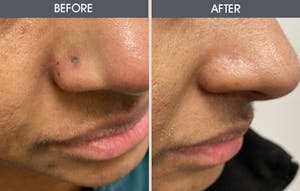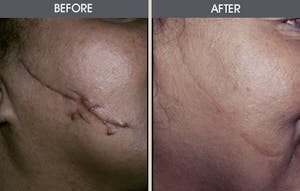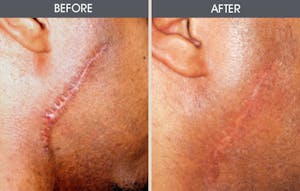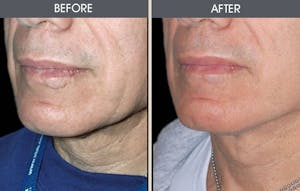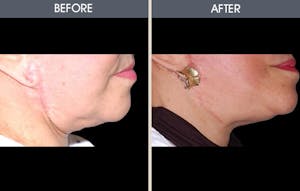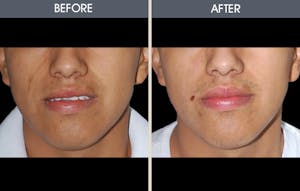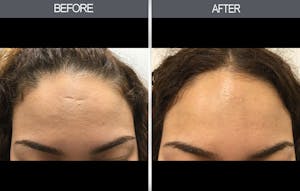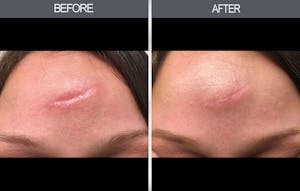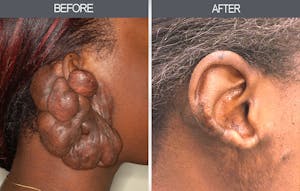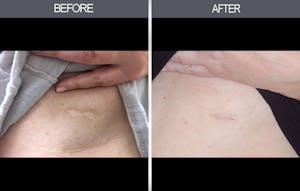Scar Revision in NYC
Although scarring is the unavoidable result of a wound to the body, visible scars can impact your self-confidence, affecting your personal, social, and professional life. Whether your scars are the result of a trauma, medical procedure, acne breakout, or other incidents, NYC scar revision and removal surgery will attempt to minimize a scar and make it less conspicuous. If the appearance of a scar is affecting your body image, undergoing scar revision surgery can bring incredible relief. Offering a variety of scar revision techniques, Dr. Antell can reduce the visibility of scars on the body, including on sensitive facial skin.
Dr. Darrick Antell: Top NYC Plastic Surgeon
Dr. Darrick E. Antell, M.D., F.A.C.S, is among the most experienced board-certified plastic surgeons in New York, known across the globe for his skills, experience, and contributions to medical science. Throughout his career, he has received numerous honors, including being named a “Top Plastic Surgeon” by Harper’s Bazaar, Town and Country, Vogue, and New York Magazine. One of his most remarkable accomplishments, however, is being the only plastic surgeon to have his research featured in the Smithsonian Museum. With decades of experience, meticulous surgical techniques, and the utmost dedication to his patients, Dr. Antell’s expertise will ensure that your scar is revised in the best manner possible.

Am I a candidate for scar revision?
Many scars become less noticeable with time, taking up to a year to fully heal. You are likely an ideal candidate for scar revision if you:
- Are bothered by the appearance of a scar on your body
- Have waited at least a year since the original wound to allow the scar to mature
If you're bothered by a scar, your first step should be to consult a board-certified plastic surgeon. Dr. Antell will examine the condition of the scar or scars and advise you of the proper treatment for attempting to reduce the visibility.
Will my scar be removed?
While no scar can be entirely removed, Dr. Antell can often dramatically improve the appearance of scars, making them less visible through the injection or application of specific medications or surgical procedures for scar revision. Each case is unique, and the degree to that we can treat your scars can only be determined after an in-person analysis.

Meet Dr. Antell
- About
- Memberships
- Awards

Keloid Scars
Keloids are thick, puckered, itchy clusters of scar tissue that grow beyond the edges of a wound or incision. They can often appear red or darker in color than the surrounding skin. Keloids occur when the body continues to produce a tough, fibrous protein after a wound has healed. Keloids can appear anywhere on the body, but they're most common where there is little underlying fatty tissue, such as on the ears, face, neck, and shoulders. The tendency to develop keloids reduces as you grow older.
The most common treatment for keloid scars is the injection of a steroid medication directly into the scar tissue to reduce redness, itching, and burning. In some cases, steroid injections are effective in shrinking the scar, making it less visible.
If steroid treatment does not result in a more attractive appearance of a scar, Dr. Antell can excise the scar tissue and carefully re-close the wound with meticulous attention to creating minimal scarring and avoiding the development of another keloid scar. As keloids tend to recur, Dr. Antell may combine the scar removal with steroid injections or radiation therapy.
Scar removal is an outpatient procedure, performed under local anesthesia. You should be back at work or resuming other activities almost immediately and any external sutures, if used, will be removed within one to two weeks. Manhattan scar revision by Dr. Antell is high quality and takes the least amount of time to heal as possible.

Hypertrophic Scars
Hypertrophic scars are often confused with keloids, as both types tend to appear thick and raised. Hypertrophic scars, however, remain within the boundaries of the original incision or wound. They can also appear hyperpigmented (dark in color and usually red) or hypopigmented (light in color). They often improve on their own or with the help of a steroid injection, such as cortisone. If a conservative approach is not effective, hypertrophic scars can be improved surgically.
Dr. Antell will remove excess scar tissue and may reposition the incision so that it heals in a less visible pattern. Depending on the size and location of the scar, this surgery may be performed with local or general anesthesia. You may receive steroid injections during surgery or need injections at regular intervals for up to two years after the procedure to maintain the improved appearance of the scar.
Contractures
Burns or other injuries resulting in the loss of a large area of skin may form a scar that pulls the edges of the skin together, a process called contraction. The resulting contracture may affect the adjacent muscles and tendons, restricting normal movement. If the contracture has existed for some time, you may need physical therapy after surgery to restore full function.
Correcting a contracture typically requires one of two methods of revision surgery:
- Skin grafting: This surgical technique uses a graft of skin from another area of the body to replace the damaged tissue, loosening the contraction and dramatically reducing the visibility of a scar.
- Z-plasty: This surgical technique repositions the scar so that it more closely conforms to the natural lines and creases of the skin, making it far less noticeable and relieving the tension caused by contracture.
What are the different methods used for scar revision?
- Steroid treatment involves the injection or topical application of a steroid, such as cortisone, which can help flatten the appearance of a scar.
- Excision involves removing the scar tissue and re-closing the wound with meticulous stitches to leave a thinner and less noticeable scar.
- Re-positioning involves excising and re-positioning the scar to run parallel to natural skin creases to make it less conspicuous.
- Dermabrasion uses a hand-held rotary wheel that carefully scrapes off the top layers of the skin to produce a smoother surface of the scar.
- Grafting involves the transfer of skin from a healthy part of the body (the donor site) to cover the injured area, leaving a scar at both the donor and recipient sites. The graft is said to “take” when new blood vessels and scar tissue form in the injured area.
- Flap surgery is a procedure in which skin, along with the underlying fat, blood vessels, and sometimes the muscle, is moved from a healthy part of the body to the injured site. In some flaps, the blood supply remains attached at one end to the donor site; in others, the blood vessels in the flap are reattached to vessels at the new site with advanced microvascular surgery.

What will my expected result be?
The recovery process and expected outcome differ based on the technique used for your scar revision. With any scar revision, it is essential that you follow post-operative instructions to ensure that the treated area heals properly. Although you will be able to return to most normal, daily activities within the first few days, Dr. Antell will advise you on when you can engage in more vigorous activities. It is important to prevent exposure of your scars to direct sunlight for the first six months by using appropriate sun-block, as this can cause changes to the pigmentation.
Although no scar can be removed completely, most patients experience a significant improvement in the appearance of the scar after undergoing scar revision treatment. While an improvement is often seen immediately, the final results of your surgery may not be apparent for a year or more, as the scar matures.
How do I get started?
Dr. Antell’s state-of-the-art practice on Park Avenue in the Upper East Side of New York City offers the most modern and innovative surgical and non-surgical scar revision treatments. Contact us today at (212) 988-4040 to schedule your consultation and get started.

